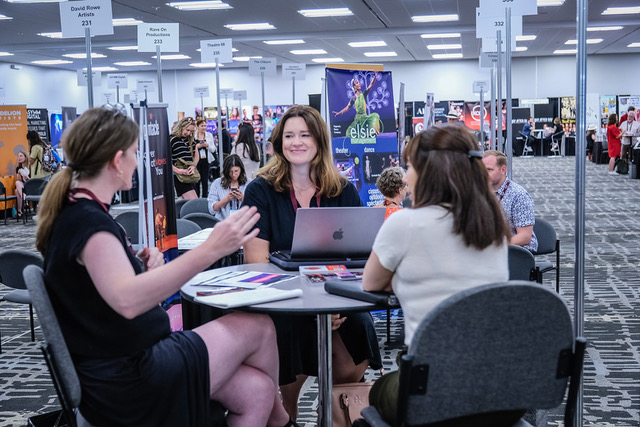
The next Western Arts Alliance Conference will be in Los Angeles, September 2-5, 2025. Arts reporter Brian Sonia-Wallace went down to San Diego this year to scope out the conference before it comes to town and bring back this state-of-the-industry report.
It was the last week of August, sweaty, and at the Town and Country Resort in San Diego, arts presenters, artists, agents, and managers poured in from all over the western United States, Canada, and Mexico for this year’s Western Arts Alliance Conference (WAA). WAA is the first in a six-month-long conference circuit whose strange alchemy determines what musicians, dancers, and theatrical acts audiences across the country see at their hometown venues through the next year.
This year, 2024, marked two years back from pandemic shutdowns, and the industry is still reeling. Joshua Heim, WAA’s Executive Director, says what he’s heard reported from venues is that audiences are back to about 2/3 of their pre-pandemic levels. I’m heartened by the promise of recovery in that, until I realize 66% is still a failing grade — an F. WAA’s attendance likewise is at about 2/3, though the optimism at what attendees dub “WAA summer camp” for the sunny San Diego vibes belies an industry that’s suffered losses thrilled to be back in person.
This, indeed, seems to be the point of WAA (and all conferences, let’s be real) — a gathering space for people, once the shop talk is done, to meet as people, to share stories of their kids and pets, celebrate retirements and small victories. For all industries, but here in particular, it’s evident that the relationships are at the core of how business happens.
As the first regional stop on the arts presenter conference circuit, WAA is smaller than some of the other conferences, and I hear from multiple participants that this is where people come, not to book shows, but to get to know each other before the booking gets hot and heavy at the national, New York-based Association of Performing Arts Professionals (APAP) conference in January. Heim explains to me that most presenters build their season first around tentpole Broadway touring shows which all but guarantee audience, and then backfill the rest with smaller acts, from world music to dance.
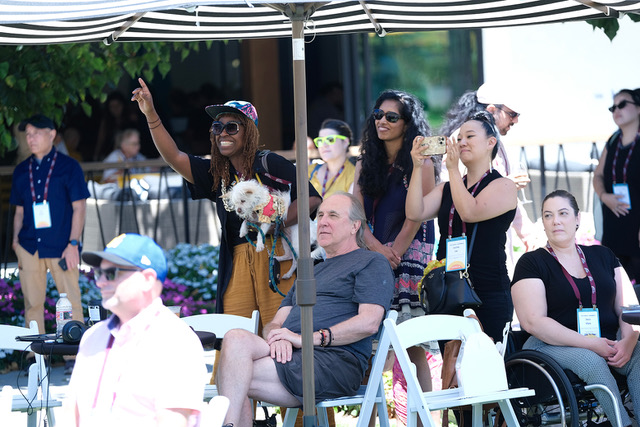
But what audiences would see and how to build them was a central question this year, with attendance down and many spaces operating at a deficit. The theme of this year’s conference was Conexciones (“connections” in Spanish). Each year, a different affinity group at WAA steers the conference’s focus, and this year it was the Latine affinity group, beginning with a pre-conference in Tijuana and with morning sessions each day specifically geared toward Latine artists and presenters. In the panel I attended on cultivating Latine audiences, the question of invitation was central as presenters grappled with how to convince new audiences that they could be at home in their space. Booking culturally relevant artists was a start, but the conversation quickly turned to the work, which increasingly falls to artists, of bringing in the community.
One artist talked about convincing the theater to hire her dad to go block to block and knock on the doors of houses with lowrider cars out front, inviting their car clubs to culturally specific work that would resonate with them. Others talked about the value of Latine audiences in educational offerings visiting local schools, whose student bodies tend to be disproportionately Latine, and filling in the gaps in textbooks about their cultural history. A Mexican artist spoke up to say that, while many American-based Latine companies focused on pocho (Mexican-American and emigrant) audiences, 90% of the audience for touring Mexican companies was not Latine. “The question is how to build intercultural dialogue,” the artist offered, “when we don’t eat the same foods.”
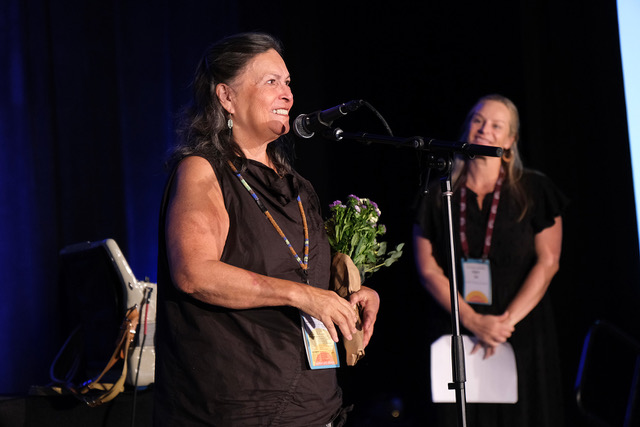
THE HISTORY
Intercultural dialogue has been a core of the Western Arts Alliance since its inception. I spoke at length with Michael Alexander, who has been coming to WAA since the third or fourth conference in the 1970’s in various roles as an artist representative, presenter, board member, and government liaison.
Back then, WAA was called the Alliance of West Coast Colleges for Cultural Presentations, and was mostly a gathering of university presenters interested in modern dance and classical music. “I was representing an ethnic dance company,” Alexander recalls, “so we were an outlier, then.” But, he says, he was welcomed. “WAA has always had a drive toward inclusivity,” he says. This was evident to him even in the leadership structure, which evolved from a board of presenters to a mixed board where artists and their agents, too, had a seat at the table.
The West presents a logistical challenge to tour artists, Alexander told me, because the distances between cities are so much greater than on the East Coast. Especially for music and dance acts, there are only so many gigs locally and so touring forms a backbone of how these groups support each other. At the formation of WAA, colleges met to coordinate and try to create a logic for how artists could work to build tours across venues.
Alexander traces the history of the conference back to soviet-era cultural diplomacy and President Lyndon Johnson’s 1965 creation of the National Endowment for the Arts (NEA) Foundation. The NEA Foundation supported symphonies and elite arts, providing matching grants as seed funding for touring productions in an effort to bring the locus of arts in the country out of New York and make performing arts accessible to Americans nationally. The NEA of that era created a touring office, focused on how to support regional presenters, and coordinated a dance touring program. Part of this program was keeping artists in host communities for a few days, and it started to build the infrastructure of school visits and community work that form part of the backbone of modern touring, where artists roles extend beyond stages and into the communities they visit.
“I don’t say I’m in the arts business anymore,” Alexander tells me. “I say I’m in the people gathering business.” He makes a differentiation between arts in capitalism and arts as capitalism. Arts presenters have the responsibility to make a profit, but the mission-driven work of the industry is less about maximizing ticket sales and more about building communities that have spaces to gather and share values.
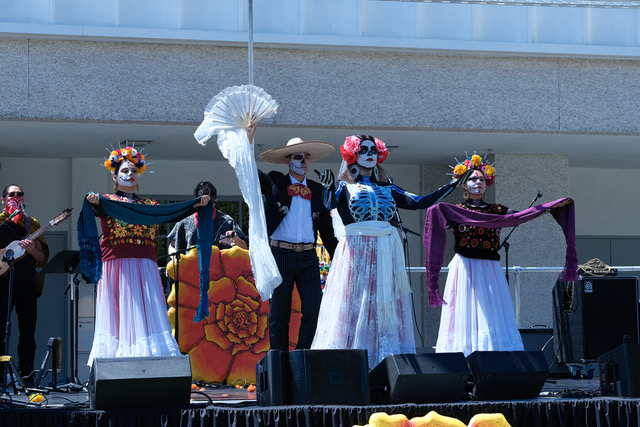
INDIE ARTISTS
I was surprised to find a number of independent artists and companies representing themselves at the conference, both on the convention floor and in independent showcases that go late into the night. For Shannon Curtis and Jamie Hill, independent artists, 2024 was their first WAA. A married couple (common among the musicians), Hill handles business and Curtis performs the stage show of 80’s synth pop hits — certainly an outlier for the types of musical acts that dominate the conference. I spoke with Hill from the road them afterward about how useful the conference was for the duo as independent artists. He shared with me that this WAA was the start of their tour this season, a sales pitch for next year to kick off booked gigs across the country. They came with few expectations, expecting a level of “insiders’ club energy,” but found instead unexpected encouragement and nurturing.
At a “Ditch the Pitch” roundtable session on Tuesday, in which participants sat in small groups and each had a minute to talk about themselves, a presenter in his 70’s (“who acted 32, he was so excited about everything,” Hill says) took them under his wing. “We pitched badly,” Hill told me, “and this presenter told us how we should be pitching. Then he asked our rate, and told us to double it.” By the end of the day, the duo had four bookings, and were thrilled to leave the four day conference with 13 interested presenters.
THE FUTURE
The meat of the conference happened at agent booths or outside the doors of the hall, at tables and low-slung chairs on the Flamingo and Palm Lawns of the Town and Country Resort, where managers met with presenters and walked them through their rosters. I got to sit in on one such meeting, where a new venue manager laid out their vision for the next year’s season and the artist manager said a few sentences about each artist. Both people scribbled in notebooks — no deals would be done this day, but each was surveying the lay of the land. This was a new relationship, replete with awkward pauses and essential smalltalk. “I’m glad that they are taking a few years to get the lay of the land and continuing the programming that came before,” the agent told me afterward. “New leaders sometimes want to rush to leave their mark and make changes without understanding the full context of who it is they’re serving. Not here.”
This conversation was the start of a relationship that will continue through subsequent months on the conference circuit, from the convention hall to independent showcases and bar nights, and on through future years at WAA.
Antonio Gómez, the outgoing board president of WAA, says that the arts are in a new reality, and there’s no going back. As streaming culture dominates our landscape, live performance is declining, and people from the demographic that once made up the backbone of audiences are now too old or staying home because of health. “It’s also increasingly a top-10 world,” he tells me, describing a celebrity-driven era in which people will pay $500 for tickets to see Beyonce or Taylor Swift live but are hesitant to pay $30 to see someone they don’t already know. Gómez sees hope beyond what he describes as “fixed-seat shows” in pop-up markets and one-of-a-kind experiences with multiple points of interactions, moving away from traditional concerts to immersive events that people can’t experience on their devices at home.
At the lunchtime awards show performance, Nu-Klezmer band Mostly Kosher talks about their work hybridizing traditional Jewish music with contemporary forms as “roots and wings, heritage and future.” As a conference with a 50+ year history, the same could be said of WAA. Margo Kane, winner of the 2024 Leadership Award, in her acceptance speech, said, “I’m not sure how to proceed, but what I’ve appreciated is the variety of perspectives and voices [at WAA]”. She spoke of the way leaders can often feel alone in attempting to anticipate — to imagine — what’s next in an ever-shifting arts landscape.
This, then, is the function of the WAA Conference. A place for presenters and artists alike to not feel alone in their imaginings.


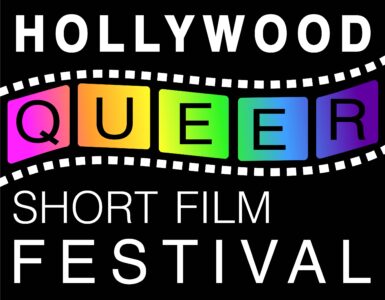
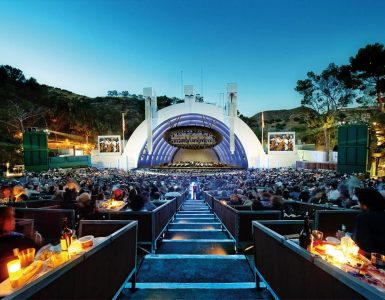
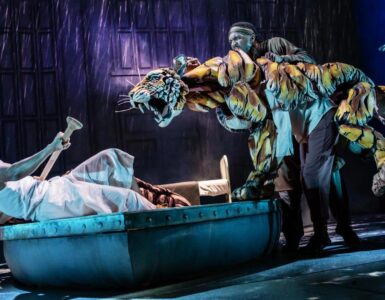


I like it when people come together and share ideas.
Great site, continue the good work!
Aw, this was a really good post. Finding the time and actual effort to produce a really good article…
but what can I say… I procrastinate a lot and never seem to
get nearly anything done.